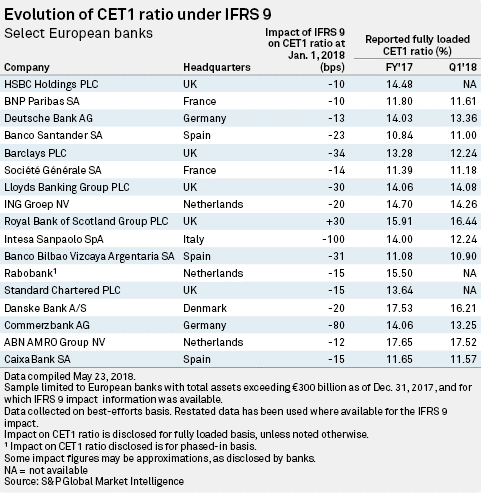New lease accounting standard kicks off from 1st April, 2019
Financial Services Division
(finserv@vinodkothari.com)
The Ministry of Corporate Affairs (MCA) has put a small announcement on its website that the new lease accounting standard, IndAS 116 will get implemented from 1st April 2019. The new Standard, globally implemented in several countries from 1st Jan 2019, is called IFRS 16. The Standard eliminates the 6-decade old distinction between financial and operating leases, from lessee accounting perspective, thereby putting all leases on the balance sheet. The phenomenon of off-balance sheet lease transactions was one of the burning analyses after bankruptcy of Enron in 2001, and since then, had been erupting off and on, until the global standard setter decides to push the new standard on the rule book in Jan 2016, effective 1st Jan 2019.
After the introduction of IFRS 16, the ICAI came out with an exposure draft on the new standard in 2017 and kept it open for comments for some days. However, nothing further was heard about it thereafter.
The exposure draft and the final published Ind AS 116 are same except for the below mentioned change which has been incorporated in the final published Ind AS 116:
| Para 47 dealing with presentation in books of lessee: | |
| In Exposure Draft | Text of published Ind AS 116 |
| Para 47 A lessee shall either present in the balance sheet, or disclose in the notes: | Para 47: A lessee shall either present in the balance sheet, or disclose in the notes: |
| (a) right-of-use assets separately from other assets. | (a) right-of-use assets separately from other assets. If a lessee does not present right-of-use assets separately in the balance sheet, the lessee shall: |
| (i) include right-of-use assets within the same line item as that within which the corresponding underlying assets would be presented if they were owned; and | |
| (ii) disclose which line items in the balance sheet include those right-of-use assets. | |
| (b) lease liabilities separately from other liabilities. | (b) lease liabilities separately from other liabilities. If a lessee does not present lease liabilities separately in the balance sheet, the lessee shall disclose which line items in the balance sheet include those liabilities. |
(above para is same as para 47 IFRS 16, thereby making IFRS 16 and Ind AS 116 exactly same now, except for the fair value option for investment property- ref para 1 of comparison with IFRS 16 )
Giving the above option makes it clear how the lessee is going to show the asset in books.
For example, if A takes Aircraft-1 on lease and owns Aircraft-2, A can either include both of them in PPE or can show Aircraft-1 in PPE and Aircraft-2 just below PPE under the head ROU.
Correspondingly, a lease liability can be disclosed separately, if not disclosed separately, then disclose which line item in BS includes the lease liability.
Globally, several jurisdictions have implemented the Standard with effect from 1st January, 2019. A list of jurisdictions which have already adopted can be viewed here.
Some of the key takeaways from the implementation of this Standard are:
- Currently, there are two accounting standards for lease transactions, first, Ind AS 17, which is applicable to the Ind AS compliant companies and second, AS 19, which is applicable to the remaining classes of companies. Ind AS 116 proposes to replace Ind AS 17, therefore, the companies which are not covered by Ind AS shall continue to follow old accounting standard.
- The applicability of this standard shall have to be examined separately for the lessor and the lessee, that is, if the lessor is Ind AS compliant and lessee is not Ind AS compliant, then lessor will follow Ind AS 116 whereas lessee will follow AS 19.
- The new standard changes treatment of operating leases in the books of the lessees significantly. Earlier, operating leases remained completely off the balance sheet of the lessee, however, vide this standard, lessees will have to recognise a right-to-use asset on their balance sheet and correspondingly a lease liability will be created in the liability side.
- Lease of low value assets and short tenure leases (up to 12 months) have been carved out from the requirement of recognition of RTU asset in the books of the lessee.
- No change in the accounting treatment in case of financial leases.
- No change in the lessor’s’ accounting.
While leasing has not been greatly popular in India compared to the world, there has been a substantial pick up in interest over recent years. Therefore, a question comes – will the new standard put a death knell to the feeble leasing industry in India? To the extent the demand for leasing comes from off balance sheet perspective for a lessee, the standard may have some impact. However, there are many economic drivers for lease transactions – such as the ease of usage, tax benefits, better residual realisation, etc. Those factors remain unaffected, and in fact, the focus of lease attractiveness will shift to real economic factors rather than balance sheet cosmetics.
The apparent question that arises here is whether the new standard unsettle the taxation framework for lease transactions in India, especially direct taxes – the answer to this question is negative. The tax treatment of lease transaction does not depend on the treatment of the transaction in books of accounts. Instead, it depends on whether the transaction is case a true lease or is merely a disguised financial transaction. There will be no impact on the indirect taxation framework as well.

